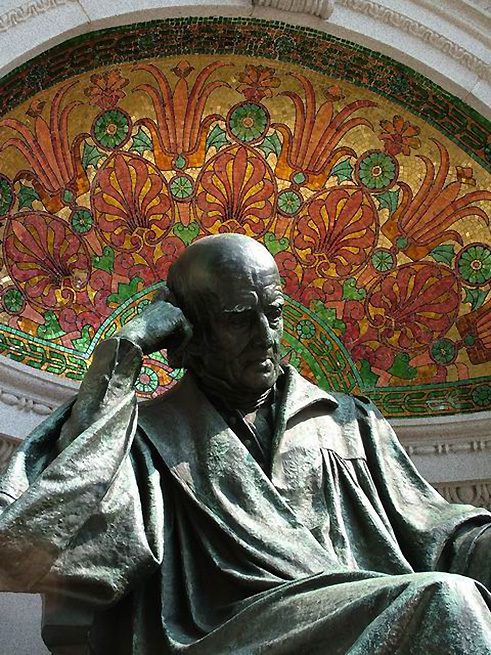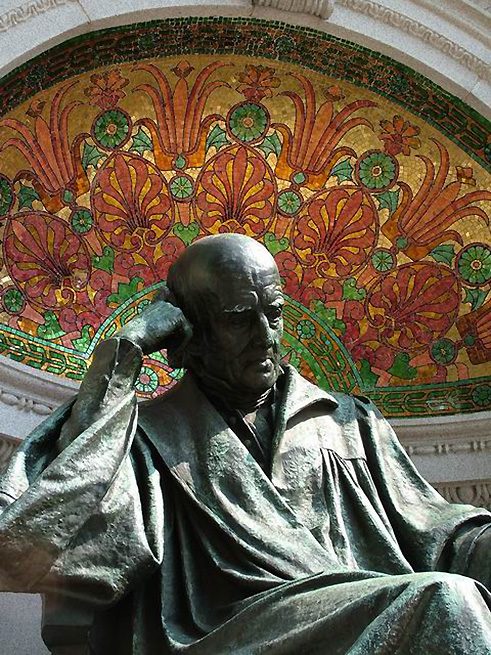Dr. Samuel Hahnemann Statue and Memorial
German Roots in Washington
-
The Dr. Samuel Hahnemann Statue and Memorial occupies a prominent location at Scott Circle. -
Four large bronze bas-relief panels on the walls surrounding the statue depict Hahnemann as a student surrounded by books, a chemist in the laboratory, a teacher in the lecture room, and a physician at the bedside. Hahnemann is seated on a pedestal centered in front of a curving wall. The pedestal bears the well-known principle of homeopathy, expressed in the Latin phrase 'similia similibus curantur' (like cures the like). The words 'Die milde Macht ist gross' (gentle power is great) are carved on the base of the memorial. (2000)
Charles Henry Niehaus was responsible for numerous statues, civil war memorials, and other sculptural pieces in Washington and around the United States. Locally, his work can be seen in the United States Capitol Building, the Library of Congress, the White House, and the Smithsonian American Art Museum.

